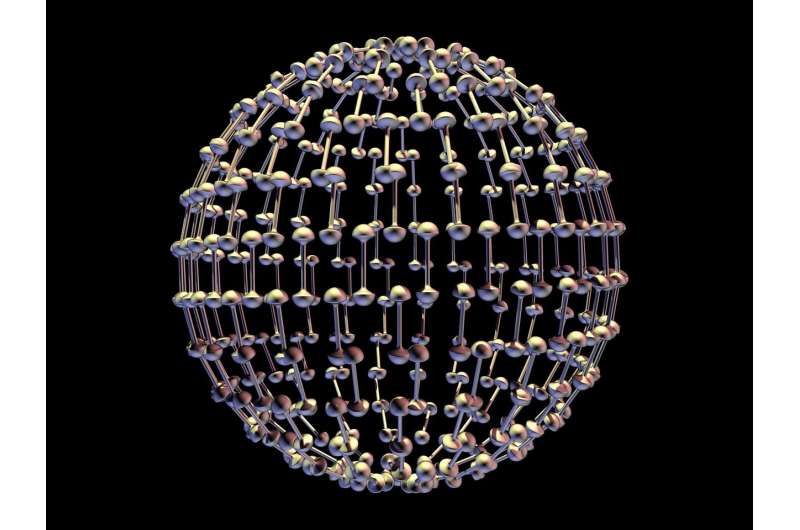Scientists find new deformation mechanism of bulk metallic glass composites

Bulk metallic glass composites (BMGCs) containing in-situ formed β-Ti dendrites are promising for many applications. However, it remains challenging to effectively tune their microstructures and mechanical properties for application.
Recently, Assoc. Prof. Zhang Long and Prof. Zhang Haifeng from the Institute of Metal Research (IMR) of the Chinese Academy of Sciences and their collaborators found that when the in-situ β-Ti has a marginal metastability, the BMGCs exhibit obvious serrated manners in the stress-strain curves. This is very different to the previously-reported tension-behavior of BMGCs, but similar to the compression-behavior of monolithic BMGs.
These findings were published in Physical Review Letters on July 28.
Uniaxial tension tests showed that this BMGC was fractured in a shear mode. In the microstructure of the fractured samples, deformation bands penetrated both the β-Ti dendrite and the local glassy matrix.
TEM characterization showed that the deformation band with a thickness of ~10 nm in the β-Ti dendrite was mainly composed of ω-Ti, suggesting that the β phase transfered to the ω phase during deformation.
The thickness of the ω band was similar to that of the shear bands in the glassy matrix, implying a continuous transfer of strains between the shear band and the ω-Ti band.
Therefore, the observed serration-behavior of the BMGC under tension arose from this new plastic deformation mechanism: the cooperative shear mechanism comprising a shear band in the glassy matrix and an ω-Ti band in the metastable β-Ti dendrite.
The glide of the three partial dislocations on three consecutive {112} planes transfered the β phase into the ω phase, due to the lower free energy of the ω phase compared to the metastable β phase. Therefore, this cooperative shear mechanism was strongly relevant to the metastability of the β phase.
The cooperative shear event comprising the shear band and the ω-Ti band induced a shear avalanche in the local region of a single dendrite (with a scale of several tens of micrometers), but it was arrested by the adjacent β-Ti dendrites with different crystalline orientations. This is because a much higher stress is required to penetrate other differently-orientated β-Ti dendrites. The repetition of activation and arrest of the cooperative shear events causes the serrations of BMGCs under tension.
The discovery of the cooperative shear comprising a shear band in glassy matrix and an ω band in β-Ti dendrite not only enriches the deformation mechanisms of BMGCs, but also provides the fundamental basis for developing high energy-release BMGCs with tensile plasticity and shear-fracture mode.
More information: L. Zhang et al. Cooperative Shear in Bulk Metallic Glass Composites Containing Metastable β -Ti Dendrites, Physical Review Letters (2020). DOI: 10.1103/PhysRevLett.125.055501
Journal information: Physical Review Letters
Provided by Chinese Academy of Sciences





















